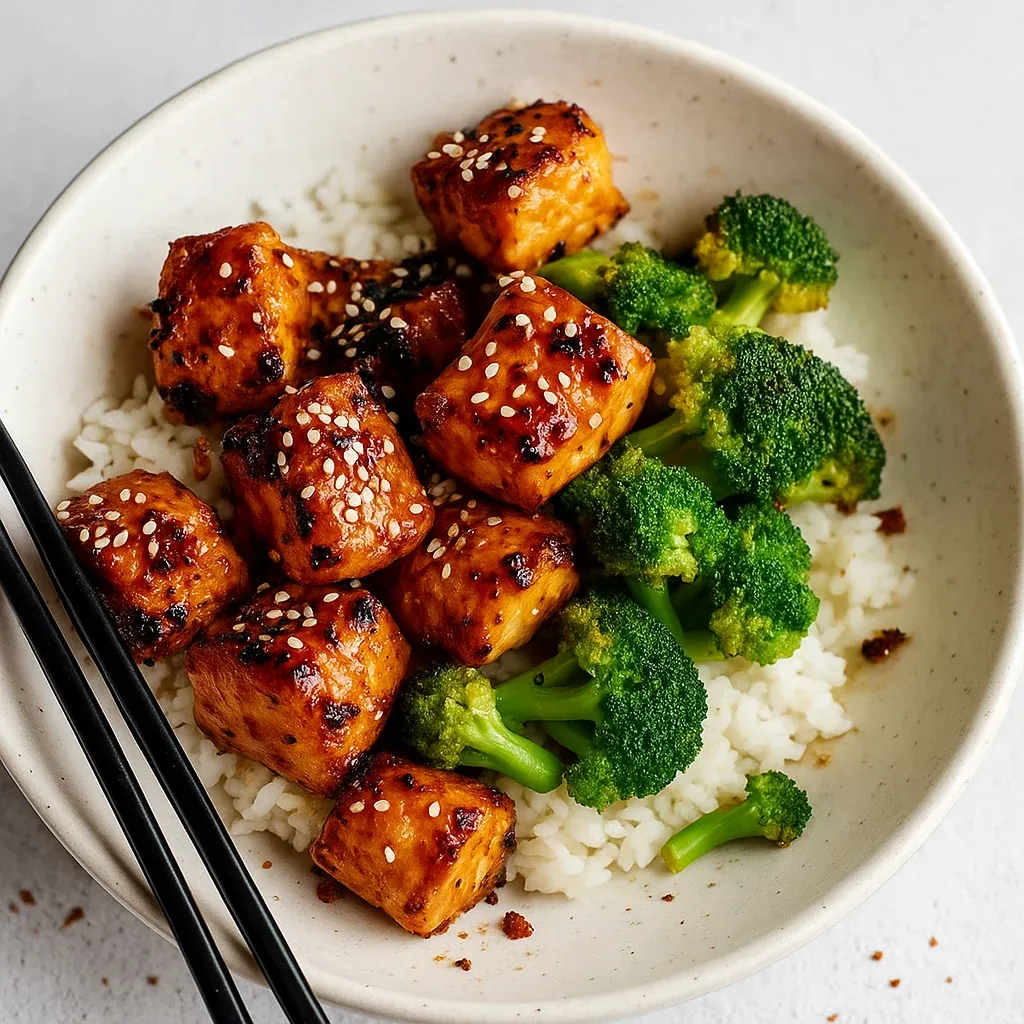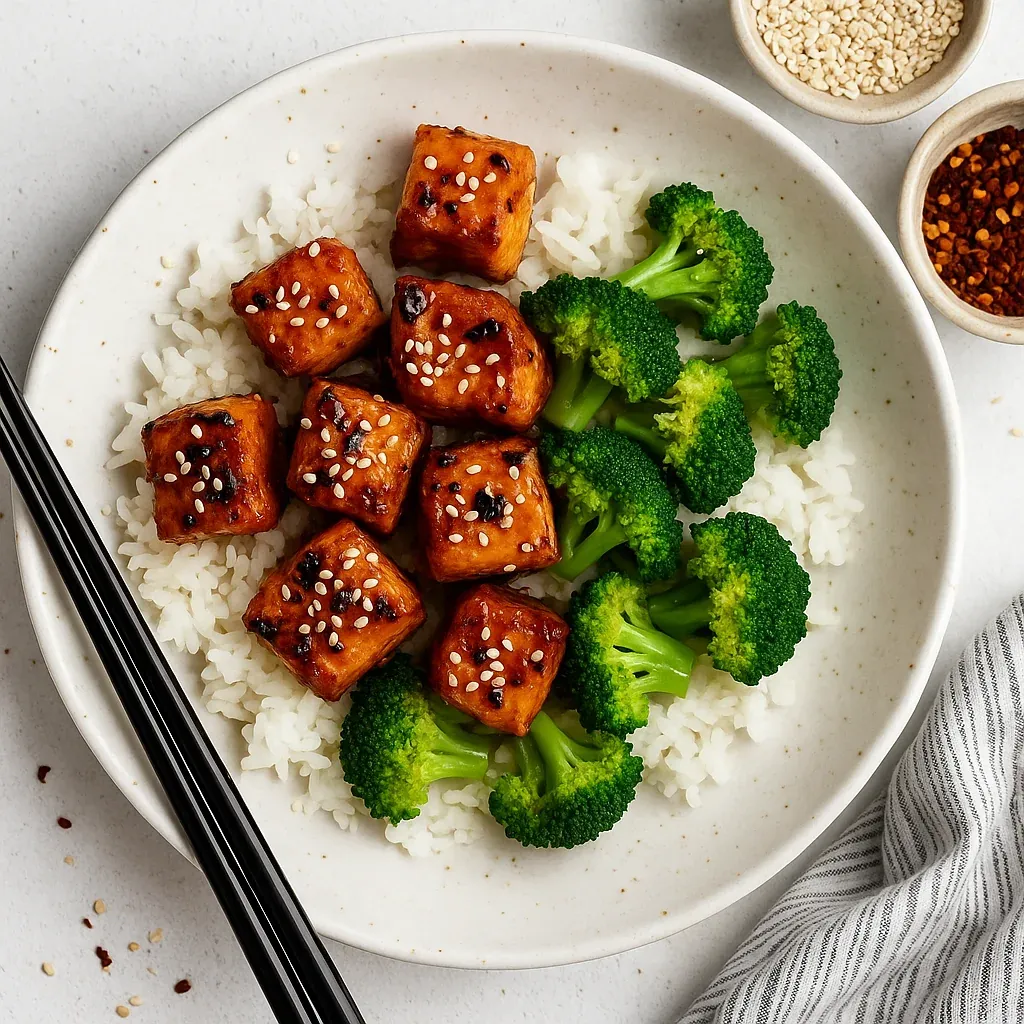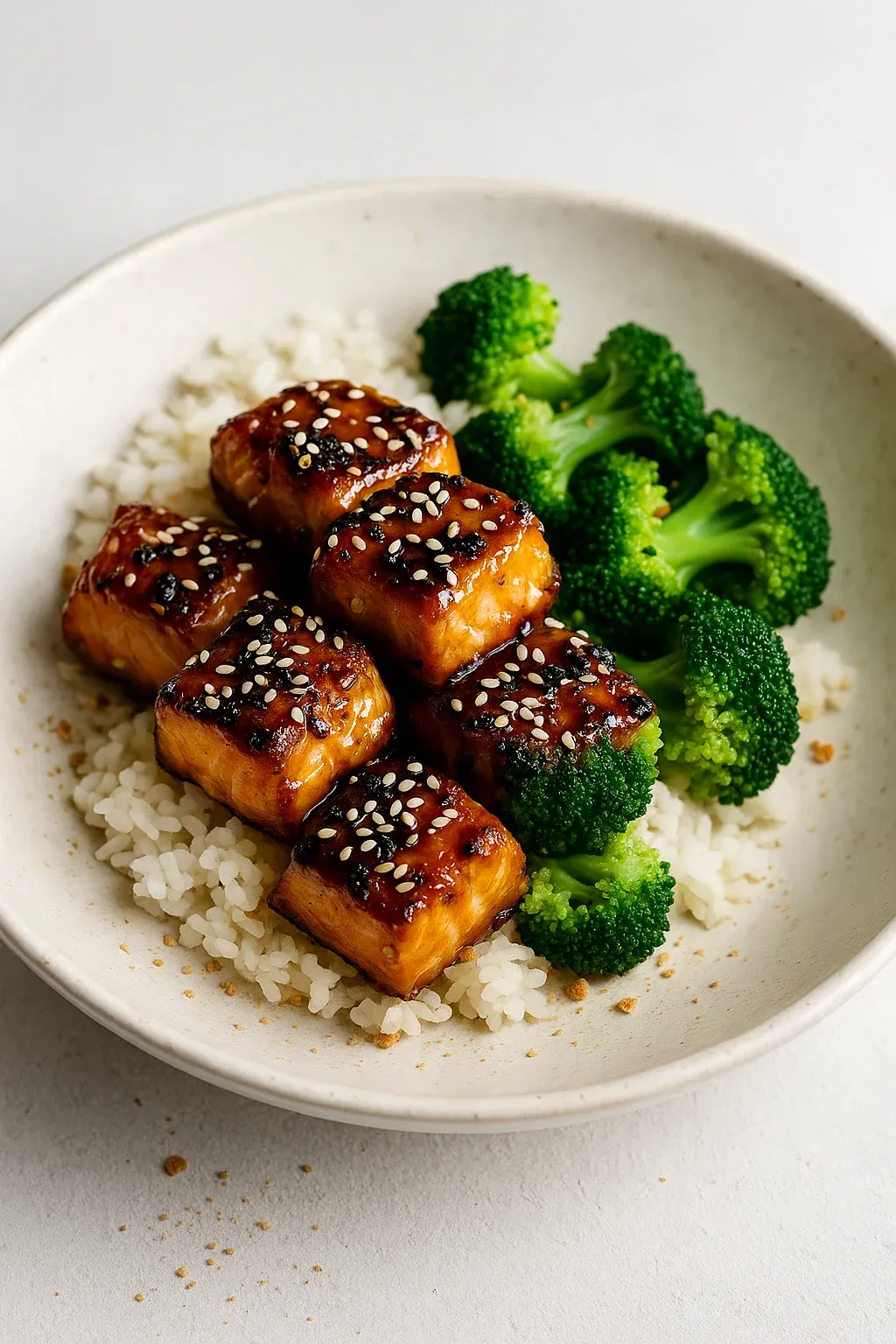 Pin it
Pin it
This pan-fried orange salmon transforms an ordinary weeknight dinner into something truly special without hours in the kitchen. The bright citrus flavors perfectly complement the rich salmon, creating a balanced dish that feels restaurant-worthy but is simple enough for beginners.
I first made this orange salmon when trying to impress my in-laws during their first visit to our home. The kitchen filled with the most amazing aroma of citrus and ginger, and now it's the first meal they request whenever they visit.
Ingredients
- Salmon fillets: Fresh wild-caught offers the best flavor but farm-raised works too
- Oil: Use a neutral oil with a high smoke point like avocado or grapeseed
- Minced garlic: Fresh provides the brightest flavor but jarred works in a pinch
- Fresh grated ginger: Adds warming spice that balances the sweetness
- Fresh orange juice: Freshly squeezed makes a noticeable difference in flavor
- Honey: Creates the perfect glaze and caramelization
- Rice vinegar: Adds subtle acidity to balance the sweetness
- Low sodium soy sauce: Provides umami depth without overwhelming saltiness
- Orange zest: Intensifies the citrus flavor throughout the dish
- Cornstarch: Creates that perfect restaurant-quality thickness in the sauce
- Red pepper flakes: Adds gentle heat that enhances all other flavors
- Rice: Creates the perfect base to soak up the delicious sauce
- Broccoli: Provides nutritional balance and color contrast
Step-by-Step Instructions
- Create the marinade:
- Whisk together orange juice, honey, rice vinegar, soy sauce, orange zest and red pepper flakes in a medium bowl until fully combined. The mixture should be vibrant orange with visible flecks of zest throughout.
- Marinate the salmon:
- Add salmon cubes to the marinade, ensuring each piece is fully coated. Allow to sit for 15 minutes at room temperature. This brief marinade infuses flavor without starting to "cook" the fish with the acid.
- Prepare the aromatics:
- Heat oil in a large skillet over medium-low heat. Add minced garlic and grated ginger, cooking for about 2 minutes until fragrant but not browned. Stir constantly to prevent burning which would add bitterness.
- Cook the salmon:
- Using tongs, transfer the salmon pieces to the hot pan, reserving the marinade. Cook for 3-4 minutes per side until golden brown and crispy. The salmon should release easily from the pan when it's ready to flip.
- Create the sauce:
- Pour the reserved marinade into a small saucepan and bring to a gentle simmer. In a separate small bowl, whisk cornstarch with 2 tablespoons of water until smooth, then add to the simmering sauce. Continue cooking while whisking until the sauce thickens enough to coat the back of a spoon.
- Combine and finish:
- Pour about three-quarters of the thickened sauce over the cooked salmon in the pan. Gently toss to coat each piece evenly, simmering for 2-3 minutes to allow the flavors to meld.
- Optional crisp finish:
- For extra texture, transfer the glazed salmon to a baking sheet and broil for 2-3 minutes until the edges caramelize and become slightly crispy.
- Serve and enjoy:
- Arrange a base of cooked rice in each bowl, add steamed broccoli alongside, then place the glazed salmon on top. Drizzle with remaining sauce and serve immediately while hot.
 Pin it
Pin it
This dish reminds me of my grandmother's kitchen where citrus was always incorporated into seafood dishes. She taught me that the acid from citrus helps cut through the richness of fish, creating perfect balance. Every time I make this recipe, I remember her insisting that the zest was the most important part for maximum flavor.
Storage Solutions
For optimal freshness, store leftover salmon and sauce separately from the rice and vegetables. The salmon will keep in an airtight container in the refrigerator for up to 3 days. Reheat gently in a skillet over medium-low heat rather than microwaving to maintain the texture. The sauce may thicken significantly when chilled but will loosen when gently reheated with a splash of water or orange juice.
 Pin it
Pin it
Simple Substitutions
If citrus allergies are a concern, pineapple juice makes an excellent substitute for orange juice, providing similar sweetness with a tropical twist. For a lower carb option, cauliflower rice works beautifully in place of traditional rice. No rice vinegar? Apple cider vinegar provides a similar acidity though slightly stronger, so use about 25% less. For a soy-free version, coconut aminos create the same umami depth with a slightly sweeter profile.
Serving Suggestions
While rice and broccoli create a classic pairing, this salmon also shines alongside roasted asparagus, sautéed bok choy, or a simple cucumber salad dressed with rice vinegar. For entertaining, consider serving smaller portions as an appetizer over crispy wonton chips. The sauce also makes an excellent glaze for chicken or shrimp if you want to mix up your protein options while keeping the same flavor profile.
Frequently Asked Questions
- → Can I use frozen salmon for this dish?
Yes, you can use frozen salmon. Thaw it completely before marinating to ensure even cooking and flavor absorption.
- → What is a good substitute for orange juice?
You can substitute orange juice with pineapple juice or a mix of lemon and honey for a different flavor profile.
- → How can I make this dish spicier?
Add extra red pepper flakes or drizzle with Sriracha sauce to boost the heat level.
- → Is there a gluten-free option for this dish?
Yes, use tamari instead of regular soy sauce to make the dish gluten-free.
- → What sides pair well with this dish?
Steamed vegetables like broccoli, snap peas, or green beans are great companions. You can also serve it with quinoa or mashed potatoes instead of rice.
- → Can I prepare the sauce ahead of time?
Yes, the sauce can be prepared and stored in the refrigerator for up to 2 days. Heat it gently before adding to the salmon.
